Summary
Strategic planning is an essential part of any business. With the proper level of management and crisis response, a company gets a whole new level of doing business. This means improvements in key microeconomic metrics. This report examines the scenario of Betterhomes LLC experiencing problems with profits and customers. The proposed strategic plan involves using Michael Porter’s five forces model, retraining employees, and improving the customer experience.
Introduction
The rules of doing business in today’s world are changing rapidly. For this reason, relying on formulas and trends that were characteristic of the economy even a few decades ago no longer seems feasible. Therefore, it is generally fair to admit that while the general basis remains constant — namely, the idea of mutually beneficial economic relations, competition, and the relationship of supply and demand — the more specific details are changing. Thus, for example, while business used to be the domain of only a few individuals who were said to have an entrepreneurial personality, in today’s world, every individual can try their hand at creating a small business (Prate, 2021). Additionally, the phenomenon of international business has become commonplace (Verbeke, 2018). This can include both a multiplicity of offices in particular regions, as in the case of multinational companies, as well as a local enterprise whose employees have different socio-economic and ethnic backgrounds. Finally, the most crucial feature of modern business has been global digitalization and technology integration (Rachinger et al., 2019). It is not easy to imagine any business that does not involve technology. This starts with the use of computerized cash registers and telephony for customer calls and may end with an advanced employee personal identification system in the context of differentiated access or advanced databases using machine learning principles to manage customers more efficiently. Even the above facts make it clear that business is a highly dynamic phenomenon, and therefore it is critical for the entrepreneur to respond quickly to these changes.
If the entrepreneur finds themselves not involved in market trends, it can lead the company into a crisis. In this context, it is fair to emphasize that making a profit is often the most important feature of any business: this is not surprising since any entrepreneur is primarily interested in getting their own benefit from the labor and resources invested (Harvey, 2017). In reality, focusing only on money is not an optimal strategy, as the individual may tend to miss out on other vectors when focusing on one. Thus, when an entrepreneur puts profit as their only priority, they do not keep an eye on the market, the competitors and does not think about the strategic development of the company. As a result, the company can produce results in the short term but will lose out to competitors in the future for lack of planning.
All of the above should lead to an unambiguous conclusion about the need for careful strategic management planning. It should be said that strategic planning is a multi-valued term, and academics tend to interpret it in peculiar ways. In this report, strategic planning is seen as how managers set the long-term direction of an organization, including its specific goals and strategies to achieve them (Vo, 2020). Moreover, since a company is rarely a completely closed system, exchanging information and resources with the external environment is not excluded. This means that both external and internal market circumstances influence the course of strategic development. It is the task of experienced managers to use all available resources in order to develop and then implement the plan in reality. Thus, a basic model of strategic planning may include five phases, as shown in Figure 1.

When discussing the practical application of the theories of strategic management in detail, it is important to always focus on the critical elements of this system. More specifically, it is necessary to clearly understand that any changes and transformations implemented as part of the strategic management of an enterprise have a goal. Typically, such a goal is determined either by the entrepreneur’s desire to improve business practices qualitatively or by the desire of shareholders or investors to gain more value from the company (Beckenstein et al., 2019). Instead, this can be summarized by the term stakeholder expectations. In this sense, it seems quite expected that the person or group of people who manage an organization finds themselves interested in finding the best vector of its development and compliance with current market trends. Therefore, it is essential to emphasize that strategic planning needs are often justified precisely by the expectations of stakeholders, whether they are individuals who have a direct influence on the company, or employees, customers, government, and even competitors.
Practical Value
It should be emphasized that this report has valuable practical value because it highlights a real problem concerning a famous Arab company in the real estate industry. More specifically, the report is built on the case of Betterhomes LLC, whose field of influence extends to the Gulf regions but is mainly relevant to the UAE. Betterhomes LLC is a well-known company with a strong brand history, headed by Linda Mahoney (Meet the team, 2021). The agency is actively developing, and therefore it is not unlikely that it faces crises and problems along the way of strategic management. For example, one only has to look at the results of the first quarter 2020 annual financial report to see the problem. Figure 2 shows that near the end of the spring of the reporting year, the company began to make losses. The loss of profit compared to the beginning of the year was more than fifty percent. This drop could have been justified by the pressures of the external environment, which resulted in the consumer choosing the better offerings of a competitor, whether it was MMP, Allsopp & Allsopp, or Driven Properties (Sohlberg, 2021). Ultimately, this would lead to a drastic reduction in market share and possible closure if Linda Mahoney and the board did not take decisive action.
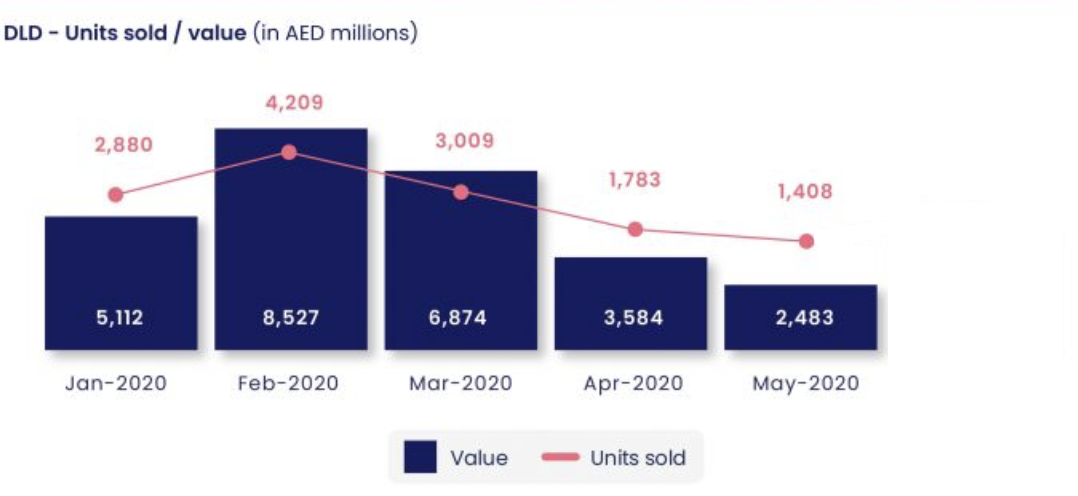
The Five Forces Model
In this context, it is natural to recall one of Michael Porter’s fundamental theories describing a strategic management model of an enterprise based on competitive advantages. It is paramount to note that the idea of this model boils down to analyzing the market structure to identify all sorts of threats posed by competitors and, as a result, develop its own successful strategy for managing them (Boyce, 2021). Porter, as a distinguished master and graduate of Harvard University, accumulated best practices in managing organizations for years, and by 1979 he produced a revolutionary five forces model in which the fundamental components of any company were identified as price, product, and niche that is engaged in the marketplace. As soon as a company offers a new product to the market, it faces intense competition, especially if the product or service is not entirely new but has analogs. Thus, competition is the main barrier that prevents the successful launch of a product on the market, and thus it is the task of an effective manager to manage these competitive forces competently. This requires the use of a quality promotional launch that will announce the product to a broad audience and thus raise initial awareness.
More interestingly, however, Michael Porter offered a broader picture of the driving forces that must be analyzed when attempting to market a product. If one turns to Figure 3, one can see that such factors are the threat of new competitors, consumer market power, the threat of product substitutes, supplier market power, and intra-industry competition. It is necessary to discuss these components in more detail. For example, the emergence of new players in the market means not only an increase in total production capacity and new standards, but also the potential for a shift in customer vectors, the redirection of consumer interest, and the need to adapt to new markets rules. Since such transformations are significant, managers must investigate the emergence of new competitors and qualitatively raise the threshold for market entry. The second can be realized both through the intensification of the steady position of the old brands or the need to have an impressive capital in the first phases and through high operating costs and the difficulty of access to the consumer.
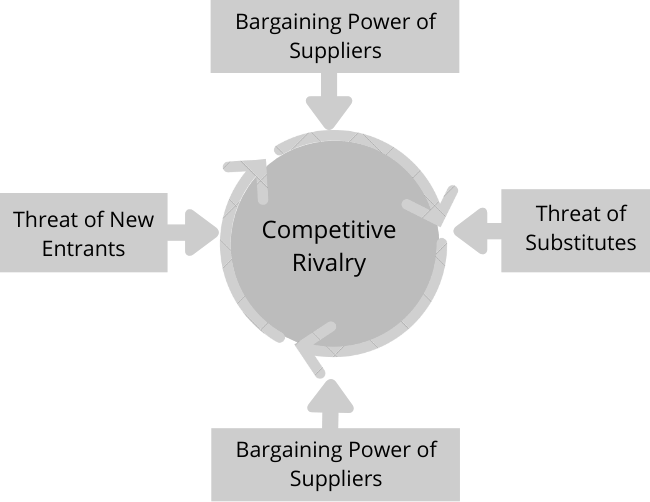
It is also essential to recognize that a product or service can be in demand exactly as long as consumers use it to solve their specific problems. In this way, the market power of consumers is formed, which can make increasingly intense demands on the product and even influence pricing policies (Boyce, 2021). In fact, for the Betterhomes, the best consumers will be those that have the most negligible impact on the entire industry. Another power, according to Porter, is with suppliers, on whom it depends how profitable it is possible to buy raw materials for production. In particular, the more expensive it cost the entrepreneur to buy the materials, the higher the production costs, and thus the final price of the goods. In this case, it was evident that if it is impossible to raise the price of the goods for consumers — since the industry is conservative — the business will be forced to make less profit.
Finally, two more forces out of five forms the likelihood of substitutes in the industry and intra-industry competition. The emergence of substitute products means setting a new upper price limit above which the business should not raise the price. For example, if the price-to-quality ratio is perfect, such a substitute product finds increased interest among consumers and, as a consequence, the current company loses profits. Finally, the fifth force in Porter’s strategic management model is intra-industry competition, the management of which requires a considerable amount of resources and finances from the company. High enough intra-industry competition can be justified by many players in the market, price fluctuations, low product differentiation, or a high entry threshold. All of the above together form a fundamental model of strategic management, which can be applied to the Betterhomes.
In the context of the concepts under consideration, it should be said that the ultimate goal of business, namely to achieve the most favorable conditions and increase profitability, can be realized if the manager follows Porter’s model for market analysis. In other words, this theory considers the interests of stakeholders — including competitors and consumers — and offers a foundation for developing strategies to manage threats and weaknesses. This model was chosen among a large number of theories of strategic management reasonably. In particular, the author was guided by three reasons why the five forces model was a priority for this company. First of all, Michael Porter is quite a famous economist whose name is closely associated with the theory of competitive advantage (Biography, 2021). Secondly, this model perfectly satisfies the interests of not only large industries but also small and medium-sized companies, which means that it is universal. Finally, the Five Forces theory is simple enough to understand and does not require deep economic knowledge, and therefore it is straightforward to adopt in practice. Thus, the Five Forces model is an excellent tool for current company because it can form the foundation for market analysis.
External Environmental Factors
The analysis of market structure is realized through both internal and external contexts. While the internal elements are often manageable and controllable, the external environment, on the other hand, has little control. Nevertheless, the components of the enterprise’s external environment constitute a valuable backbone that, if properly managed, can stimulate the qualitative and quantitative development of the company. At the same time, it must be recognized that the external environment of an enterprise is not unambiguous but rather includes many manifestations (Vanessa, 2021). In order to competently control all factors, it is appropriate to differentiate the external environment into a distant environment and a near competitive zone, as shown in Figure 3 and Figure 4 below. The following paragraphs discuss in detail the components of these two areas that shape a company’s external factors.
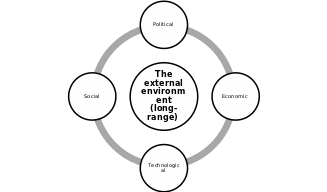
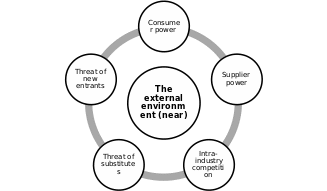
There is no doubt that each component of the external environment of the enterprise has high importance in strategic planning. In particular, as shown in Figure 4, such elements are political, economic, social, and technological environment, which form the far-field of the external environment. Thus, the political component will be necessary for the predictable and sustainable development of the organization (Shaw, 2018). This is mainly characterized by both the political stability in the state and the set of government reforms being developed. For example, if a proposed bill has a detrimental effect on the Betterhomes’ development, raises the number of tax liabilities, or bans international relations, it can lead the company to a crisis. As a consequence, an effective manager is obliged to constantly monitor the legal and regulatory framework of the state within which the professional activities are carried out. Since the organization has international offices, this means that local branches must fully comply with the legal framework of the region. In addition, it is interesting to note that the tasks of managers or analytical department include forecasting and anticipating possible ways of development of the political system so as to respond to all changes promptly. Thus, a good understanding of the political environment enables the enterprise to reduce risks in making strategic decisions significantly. This means that a detailed analysis of the political environment and, in particular, those sectors which directly affect the interests of production is vital for effective management of the enterprise.
Another interesting component of the external environment is the economic one, which takes into account the state of the market. In general, it is evident that the economic context of the enterprise is seen as the most priority because the importance of the economic environment is so enormous and non-negative that it is impossible to ignore it. More objectively, any enterprise seeks to create the best-operating conditions so as to maximize profits and minimize costs (Harvey, 207). This is made possible, among others, by attracting as many new customers as possible and retaining current ones. It is clear, then, that these tasks cannot bypass the analysis of the economic component of the external environment since the achievement of any business results is associated with the study of competitive forces and the development of advantages. So, there is no doubt about the critical need to study the economic environment, but it is essential to clarify what specific forces matter. More specifically, it is not enough to study only macroeconomic indicators, whether GDP, inflation, or unemployment. On the contrary, an extensive economic study should also involve the skills of forecasting and modeling possible market trends, as well as their potential impact on the enterprise. As an example, if the analytics department predicts that the key interest rate will increase within a few months, it is the task of management to assess the effects of this change on the company and the environment.
The third component of the far-field of the company’s external environment is the social environment, which takes into account human resources and the perception of the product. So social or sociocultural factors, along with the forces already mentioned, are fundamental to the strategic analysis of the company. To be more exact, the social side operates with such metrics as income level, market demographics, average consumer profile, the target audience of projects, education level, and cultural and national behavior patterns. However, not all components of the social environment can be measured by quantitative measures. The study of such sociocultural trends as traditions and customs is challenging for a manager. At the same time, their competent management can allow a company to increase its customer potential. For example, most multinational companies use the sociocultural characteristics of the population to create more targeted advertising (Al-Kwifi et al., 2020). This leads to greater customer engagement and, as a result, profit maximization.
Finally, the last component of the further external environment of the company is the technological side. As the name suggests, this component focuses on technology, including the optimization of its use to increase the production capacity of the company. However, it is a mistake to assume that the technological aspect involves only the hardware component. On the contrary, based on a detailed study of the technological environment of the external environment, the manager can draw conclusions about the state of scientific and technological progress of the industry, key development trends, and R&D strategies of the enterprise (Introduction to business technology, 2019). This includes analyzing the competitive advantage in terms of technological advances. For example, if a competitor enterprise has more S&T results and innovations, this can lead to a drop in customer popularity of the Betterhomes. Then the tasks of an effective manager include ensuring constant monitoring of the market’s technological state to promptly adjust the plans of strategic development.
Example of Practical Realization of Management Strategy
Once the external environment of the company has been successfully studied, it is necessary to describe the internal sphere briefly. Once this study is complete, it will be possible to propose a specific strategy that can be used by the described organization to overcome current problems. In brief, a company’s internal environment characterizes the set of processes by which an organization converts available resources into goods offered to the market (Vanessa, 2021). This includes both operational and resource components. The most apparent resources of the company, namely employees and managers, form the backbone of the resource part, while the operational component is a set of processes that enable the transformation of raw materials into a finished product or service. In the company’s internal environment, the strategic analysis highlights components such as production, personnel, management organization, finance, marketing policy, and accounting, as shown in Figure 6. In order to carry out successful organizational development, a company must continually identify existing and potential opportunities regarding the most effective use of available resources. After all, it is these resources that make up an organization’s market potential.
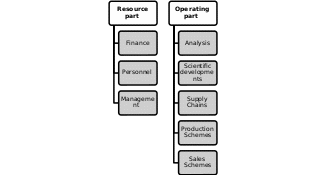
Finally, it now seems possible to develop a specific production strategy that finds practical application in the company’s context under discussion. So, the first point to start with is the definition of objectives, which should be closely related to the organization’s mission. The Betterhomes LLC is trying to escape a financial crisis that is causing it to lose market share. In other words, the company is rapidly declining in position and popularity with clients. This is reflected, among others, in the reduction of the client base and the reduction of the company’s profits, as report said. It should be emphasized that since the company has a long history of existence, the previous results of strategic management should be critically evaluated before setting new goals. In addition, it is not enough just to formulate general goals: as it is known, without a competent formulation of the task, it will not lead to any results (Vudata, 2019). At the same time, SMART target planning, on the contrary, would create a commensurate and time-bound system of goals and objectives. In this phase, it is advisable to initiate a competitive market analysis that would focus on a critical assessment of the current state of the industry. Specifically, this can be implemented according to the five forces model discussed earlier (Scott, 2020). Clear guidelines should then be given to the analytics and market research department so that they can gather sufficient data for the analysis. The second step should be to prioritize the company because achieving money cannot be an end in itself. Priorities are set uniquely on a case-by-case basis but generally include meeting customer needs, developing new products, increasing the employee engagement index, reducing errors and designing an incentive program, and reducing employee turnover. Concerning the firm in question, developing a strategy for proper product presentation, increasing customer engagement, and reshaping the budget are priorities.
The next step in strategic planning is forming a plan that would address all current weaknesses and cover existing problems. Developing such a plan cannot be a purely individual task, as it is impossible to avoid biases and errors of subjectivity. On the contrary, in order for the finished strategic development project to be as comprehensive as possible and cover the interests of all stakeholders, key players must be involved. Thus, brainstorming or open voting formats may be sufficient to come to a consensus on the vision for a new strategic development project for the firm (Rawlinson, 2017). When the original plan is ready, it means that it needs to be critically vetted. In particular, performance reviews should be conducted by both the finance department in terms of the cost-effectiveness and economic benefits of such changes, as well as by the manager. In some cases, companies resort to a third-party audit to critically evaluate proposed strategies and predict their consequences (Moffitt et al., 2018). Taken together, this allows for a less vulnerable and better strategic development plan.
When the theoretical concept is prepared, the firm must move on to the practical steps of implementing change. In particular, transformational strategies are implemented at all levels of the organization according to predetermined timelines and rules. For example, if the Betterhomes requires that the number of employees serving clients increase within a week, then the HR department will have to take care of this promptly. As one can see, in the practical implementation of strategic management, it is critical that all proposed plans are implemented according to schedule and budget. This requires the formation of a department that could monitor organizational transformations and promptly correct the plan in case of delays or lack of results. At the same time, Mahoney should take care of the training program for employees. Since the firm in question was rapidly losing clients, it is likely that this loss was due in part to a lack of competence in client management. It is very likely that the firm’s employees had little interest in growing the firm and were not motivated to become more involved with the customer. As a result, customers chose a more loyal competitor. An employee training program should remedy this situation and provide employees with new knowledge and skills on how to manage customer behavior.
The proposed strategy requires significant resources from the Betterhomes. It requires not only the use of a substantial portion of the company’s current finances but also the technical equipment to conduct employee training and change the format of the offices, if necessary. Since the company is currently experiencing significant profit problems, a good solution would be to take out a corporate loan at the best possible terms (Tuovila, 2020). On the other hand, money can be obtained from investors, but then Mahoney must prepare sufficient grounds for outside entrepreneurs to invest in the company’s development during the crisis stage. The technical equipment of the company must also be sufficient to form an environment for development. For example, it would be wrong to expect customer loyalty to improve if the firm has neither a computer database of customers nor telephony to serve them. Among others, equipment means the use of office space for professional pieces of training, during which employees could improve their competencies. The only consideration of all potential threats and risks should underlie the practical implementation of planning. In reality, none of the theoretical plans can be perfectly realized, so the corporate leader must execute proper progress management. As it seems, the proposed strategy is an excellent tool to solve the current problems of the company and achieve positive expected results.
Commitment to Innovation
To be relevant and in line with the agenda of today’s marketplace, the strategic management plan being created must be characterized by a commitment to innovation. Such a culture should be characteristic of the firm for which organizational transformations are being carried out. It is known that consumers love technology, and therefore the image of a modern and developed company will be a tremendous advantage to increase customer loyalty (Brown, 2019). At the same time, the use of technology dramatically simplifies the company’s work, whether it is computer software or deep machine analysis of data. In the proposed management strategy, computers are necessary to manage customers and perform financial calculations of real estate projects profitability intelligently. Telephone technology is also necessary to provide round-the-clock customer service. In the context of positive change, strategic planning also involves retraining employees, and so there is potential to use technology. In particular, the software will allow training to be done remotely, which means every employee can take it at a time that is convenient for them: this increases employee engagement. In addition, with the help of online assessment technologies, it becomes possible to conduct periodic monitoring of learning progress through tests. Dynamics logs will show employees’ competence improvements almost in real-time, which means that the minor productive employees will be taken under control in time. On the contrary, those employees who show the best results in customer orientation training can be encouraged.
The proposed strategy is qualitatively different from known alternatives in that it offers a more extensive analysis of current states but requires comparably more resources. In particular, one solution — selling more services to a customer — seems unacceptable in these circumstances since the company is already losing customers and profits. Offering to purchase additional help now may be seen as an imposition of services, and therefore this strategy is not the right one for the firm. At the same time, a product differentiation strategy is usually a good solution, but for this company, it means spending a considerable amount of finances and production capacity. There is no exact guarantee that this idea will fail in the organization’s case, but it is better to delve deeper into improving customer service practices to achieve a more reliable result. Moreover, strategies to improve sustainability and technological advantage are not the first priority right now: it matters in the long run, but the company’s situation requires quick, decisive action.
Developing a Plan and Meeting Expectations
Table 1. Step-by-step Description of the Developed Strategic Plan with a Specific Time Frame
Table 2. Compliance with Stakeholder Expectations
Recommendations
Following the developed management strategy will qualitatively improve the Betterhomes’ key parameters and cover current weaknesses. Critical areas of organizational transformation include competitive market analysis based on Porter’s model and enhancing the customer service experience, as well as improving employee competencies through training programs. Although the strategy is universal and covers the interests of all stakeholders, delays and problems are possible in practice. The recommendation for Mahoney is to ensure that the prescribed deadlines, budgets, and rules are strictly adhered to. In addition, if there are any problems and costs, the manager should ensure that states are competently monitored, and situations are proactively managed.
Conclusion
The above reasoning allows the company in question to improve its own performance and customer experience. In the long run, this means a whole new level of doing business, in which the current problems will be solved. Therefore competent following of the strategic plan should be the priority of the company. If it is not possible to follow the instructions well, then the company should adjust its own operational effectiveness.
Current Organizational Chart
The current company — Betterhomes LLC — is in a severe economic crisis in which it is losing significant market share and, as a result, its profits are shrinking. Eventually, in the absence of proper strategic restructuring, the company is threatened with closure. The company has a Board of Directors, which means that it can be concluded that the company is a stock organizational arrangement in which the key shareholders have stakes in the company. Furthermore, the more significant the initial investment, the higher the individual’s controlling interest in the company (Watson et al., 2019). With this structure, important decisions are made collectively in meetings, so the likelihood of subjectivity or bias is minimal. It should also be recognized that in some cases, the Board of Directors is different from the shareholders and represents hired employees representing the interests of management. The idea that the author can offer each Board member a report on strategic changes reveals the idea of employee involvement in the business. More specifically, companies in which an employee can influence decisions have power because it allows the interests of stakeholders to be considered (Nikolov and Arsić, 2017). Such organizations may lack strict hierarchical barriers, and therefore the opinion of the rank-and-file employee can be taken into account when planning operational transformations.
Effectiveness of the Current Structure
It is fair to say that although the firm is having severe problems with profits and maintaining industry market share, the idea of a vertical company hierarchy involving employee opinion seems strategically correct. In fact, the effectiveness of the current organizational scheme is justified by the involvement of rank-and-file employees since it is very likely that they can influence key decisions. However, as can be understood, the company practices a strictly vertical hierarchy in which a centralized supervisor manages all employees, as suggested in Figure 7. This is evident, among others, from the concept of the Board of Directors, who unanimously make strategic decisions. Thus, there is an impression of a generally closed management system, which can have a pernicious effect on employee motivation and commitment.
The current organizational chart needs a serious review, as it seems that the gap between management and employees may be exacerbated in the future. The lack of balanced communication based on the principles of mutual respect and the promotion of engagement may have an inhibitory effect on strategic development in the future. Therefore, the Betterhomes requires revision, including not only through covering current problems but also to create a good foundation for development. Changes are proposed both at the structural level and at the resource and operational levels. As it could be seen, the company that will implement the proposed changes will gain a number of critical specific advantages and will not only return but also increase its share on the industry market.
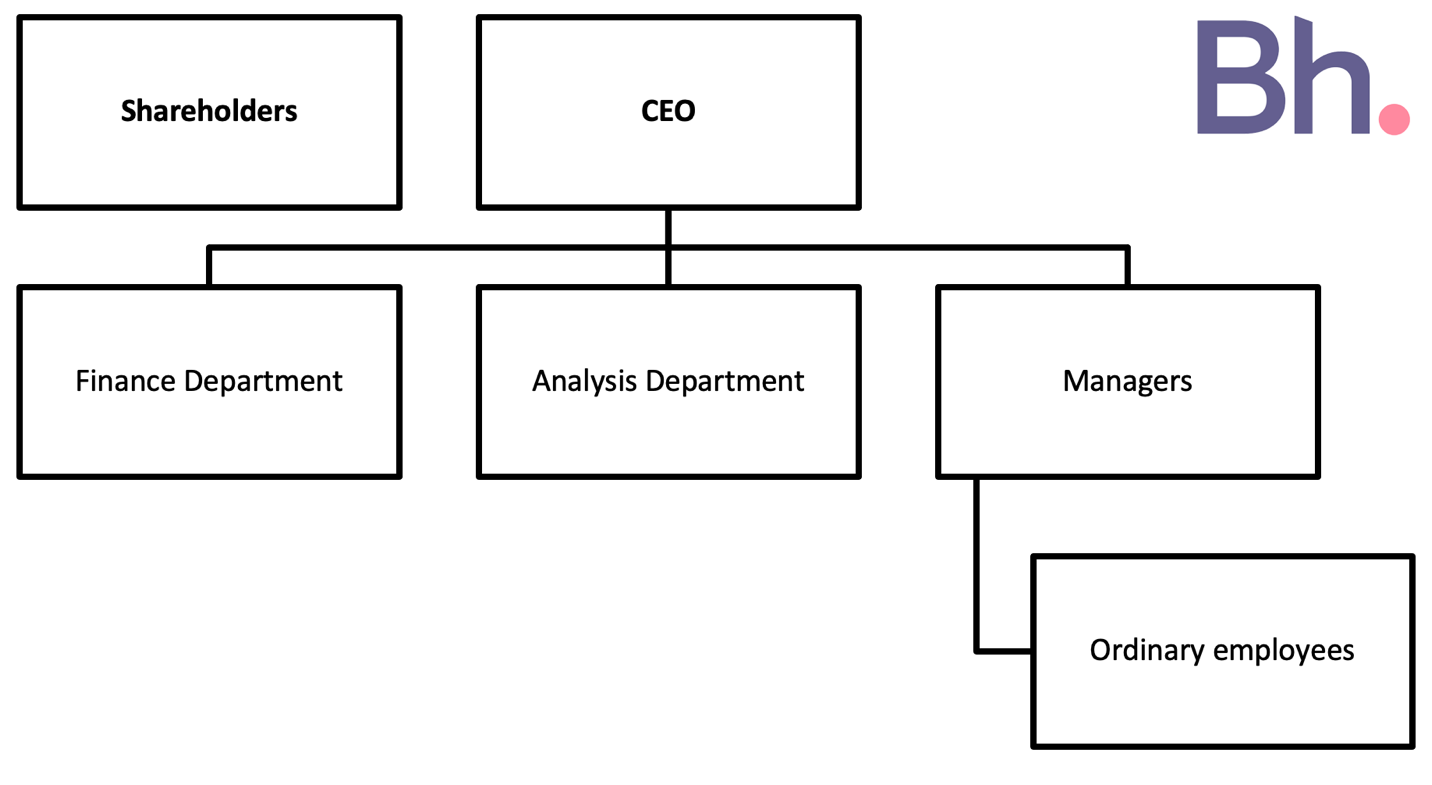
Proposed Strategic Restructuring
Based on the above facts, it is appropriate to recognize the importance of strategic restructuring for the firm in question. There is no reason to maintain the current state, as Mahoney is already complaining about rapidly declining profits and declining industry market share. Consequently, not making any changes will only exacerbate this situation, and, as a result, the company will soon go bankrupt and close. For the practice of restructuring, it is proposed initially to choose the foundation around which the changes will be built. The underlying idea of the new structure focuses on a bubble model in which the entire firm is differentiated into semi-autonomous branches, each with its own representation on the board of directors. More specifically, as Figure 8 illustrates, the cutoff structure of the firm is a set of subsets responsible for unique functions: finance, marketing, HR, analytics, and other vectors. Each of these bubbles has its own operational and resource components, but most importantly, its own leader. The leader of each sub-vector is formed by many managers of the entire company. It should be emphasized that this is a beneficial strategy for differentiating responsibility and delegating authority (Steffel and Williams, 2018). This Western model of hierarchy in the company is also different in that in case of problems and crisis states, the blame is not placed entirely on the CEO but instead is dissected and discussed at each specific level. Thus, if during the implementation of strategic planning plans, it turned out that the budget was miscalculated, it is not only the fault of inadequate management and control of senior management but also of the finance management department in particular. Knowing the sources of the problem, it becomes possible to substantively respond to the situation and take action (Genever, 2020). At the same time, the division of authority among leaders has the advantage of a more intelligent strategic planning design. More specifically, since each of the leaders is included on the board of directors, one would expect the views of each department to be considered equally. As a result, this will lead to more involved departments and eliminate the problem of the gap between management and employees.
Another innovation for the modified organizational structure is to improve the operational effectiveness of the rank-and-file employees. As noted earlier, training is one of the pillars of the proposed strategic training because therein lies the enhancement of the customer service experience. Consequently, it is imperative for the new system in the organization that employees increase their awareness of customer service issues. In terms of structural restructuring, this means that the HR department must form a new area responsible for training. This training must be systematic and obligatory: it is necessary to avoid the situation when employees may refuse training programs only because they do not want to develop or because of lack of time. Initial training can take up to two weeks, and it should not last more than one hour a day. Once the necessary skills of employees are formed, the phase of practical adaptation begins: employees translate knowledge into professional processes while coordinators monitor progress and evaluate the results. Such practices are suggested to be repeated at least once a year, and repeated training can take comparably less time. It should also be said that training should focus not only on rank-and-file office workers but also on managers since the new organizational structure implies an expanded network of leaders. In particular, the training of managers should develop their team management skills, learning motivation, and responsibility, including for failure (Lacerenza et al., 2017). It seems that the proposed structural restructuring has a meaningful advantage for the firm in question and will be able to raise the current microeconomic parameters highly.
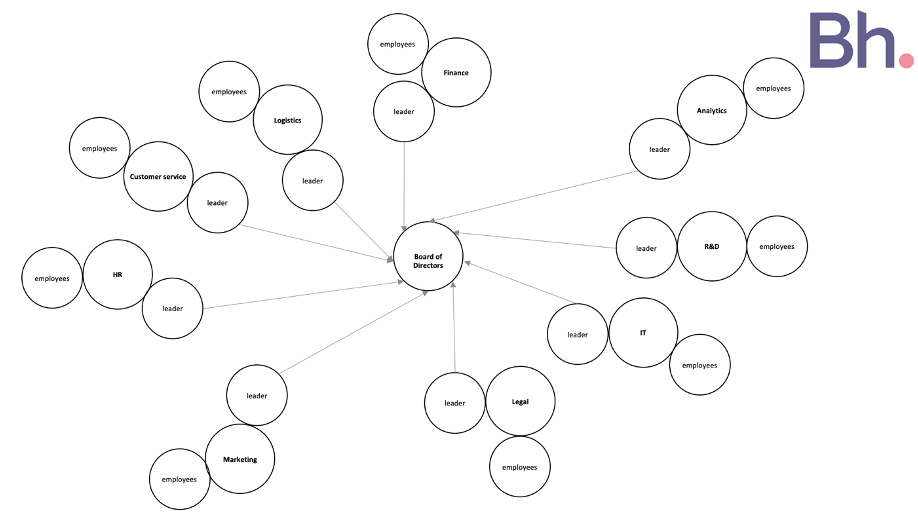
Based on Figure 8, it becomes possible to draw several conclusions about the modified model of organizational structure and its effectiveness. First of all, the bubble scheme balances the levels of responsibility. This means that in case of crisis situations, the problem can be decomposed into components so as to determine the responsibilities of the parties. Second, this hierarchy system allows for effective communication between the leader and subordinate employees (Moseley, 2018). In fact, senior management, represented by the CEO and board of directors, may be too busy to meet with and listen to employees. This, in turn, creates problems of lack of contact and the resulting interpersonal and professional disconnect. In contrast, the fact that each department has its own leader makes it possible to fill the communication gap with the manager. Now each individual knows for sure that their manager has become closer, and therefore can share their thoughts and results personally. A third positive effect of this structure that increases operational efficiency is the stimulation of competition (Ghetti, 2018). Since the company is now represented by a set of departments, each of them tries to meet the set plan and achieve the best results. In such a context, senior management can develop a motivational incentive program where the best department is rewarded for their performance. Finally, as mentioned earlier, the representation of each department’s leader on the board has a beneficial effect on corporate engagement. This participation means that each department has equal power in the decision-making of the entire firm, which further stimulates engagement and motivation. To summarize all the ideas discussed in this section, Table 3 was created to summarize all the fundamental theses.
Table 3. A Matrix of Current Problems and Proposed Solutions, Indicating Their Operational Advantage for the Firm in Question
Finally, a critical evaluation of the firm’s strategic restructuring plan should be conducted in order to assess its effectiveness in view of the vulnerabilities that exist. For example, it is important to note that any changes require significant resources, primarily if these transformations are implemented at the corporate level. Such changes require finances, the personal commitment of managers, and time for all the steps taken to be adapted at a practical level. In addition, it is expected that not all employees will be able to get used to the new system since the proposed ideas qualitatively change the structure. As a result, conflicts and open strikes can occur. To manage these adverse conditions, Mahoney must explain to all employees in an easy-to-understand way why organizational transformation is necessary. It is vital to get conflicts resolved, but not to fire all dissenting employees. Another concern in view of the implementation of a new strategic restructuring is the likelihood of complete departmental autonomy. When individual workgroups are given complete power over their activities, this can lead to a desire to close off cooperation with other departments. Thus, in order to create a cohesive and unified corporate network — rather than a collection of separate autonomous sets — a manager may periodically initiate leisurely collaborative programs (Tomakh, 2018). More specifically, these can be themed evenings, holidays, or anniversary events for the company.
Reference List
Al-Kwifi, O.S., Farha, A.K.A. and Zaraket, W.S. (2020) ‘Competitive dynamics between multinational companies and local rivals in emerging markets,’ FIIB Business Review, 9(3), pp. 189-204.
Beckenstein, A. R., et al. (2019) Principles and purpose: a statement on stakeholders. Web.
Betterhomes market report H1 (2020) Web.
Biography (2021) Web.
Boyce, P. (2021) Porters 5 forces definition. Web.
Brown, J. (2019) Actually, consumers love Big Tech, even if they say they don’t. Web.
Genever, H. (2020) 10 step process for effective business problem solving. Web.
Ghetti, R. (2018) ‘Unification, harmonisation and competition in European company forms,’ European Business Law Review, 29(5), pp. 813 – 842.
Goyal, A. (2020) ‘A critical analysis of Porter’s 5 forces model Analysis of Porter’s,’ JETIR, 7(7), pp. 149-152.
Harvey, A. C. (2017) The fundamental purpose of business – part I. Web.
Introduction to business technology (2019) Web.
Kenton, W. (2021) Strategic management. Web.
Lacerenza, C.N., Reyes, D.L., Marlow, S.L., Joseph, D.L. and Salas, E. (2017) ‘Leadership training design, delivery, and implementation: A meta-analysis,’ Journal of Applied Psychology, 102(12), pp. 1686-1697.
Maasik, A. (2019) Reducing the communication gap between employees and management. Web.
Meet the team (2021) Web.
Moffitt, K.C., Rozario, A.M. and Vasarhelyi, M.A. (2018) ‘Robotic process automation for auditing,’ Journal of Emerging Technologies in Accounting, 15(1), pp. 1-10.
Moseley, C. (2018) 6 ways to improve communication between managers and employees. Web.
Nikolova, V. and Arsić, S. (2017) ‘The stakeholder approach in corporate social responsibility,’ Engineering management, 3(1), pp. 24-35.
Prate, M. (2021) 54 small business ideas for anyone who wants to run their own business. Web.
Rachinger, M., Rauter, R., Müller, C., Vorraber, W. and Schirgi, E. (2019) ‘Digitalization and its influence on business model innovation,’ Journal of Manufacturing Technology Management, 30(8), pp. 1143-1160.
Rawlinson, J.G. (2017) Creative thinking and brainstorming. London: Routledge.
Scott, G. (2020) Porter’s 5 forces. Web.
Shaw, A. A. (2018) Political factors affect business environment. Web.
Sohlberg, M. (2021) Top 12 real estate agencies in Dubai: the ultimate guide. Web.
Steffel, M. and Williams, E.F. (2018) ‘Delegating decisions: Recruiting others to make choices we might regret,’ Journal of Consumer Research, 44(5), pp. 1015-1032.
Tomakh, A. (2018) The top 10 most common types of corporate events. Web.
Tuovila, A. (2020) Corporate credit rating. Web.
Vanessa (2021) What are internal & external environmental factors that affect business. Web.
Verbeke, A., Coeurderoy, R. and Matt, T. (2018) ‘The future of international business research on corporate globalization that never was,’ Journal of International Business Studies, 49, pp. 1101–1112.
Vo, E. (2020) What is strategic planning? Web.
Vudata, V. (2019) The problem statement: is it necessary in lean six sigma? Web.
Watson, N., McKenzie, B. and Smith, T. (2019) Shareholders’ rights in private and public companies in the UK: overview. Web.
